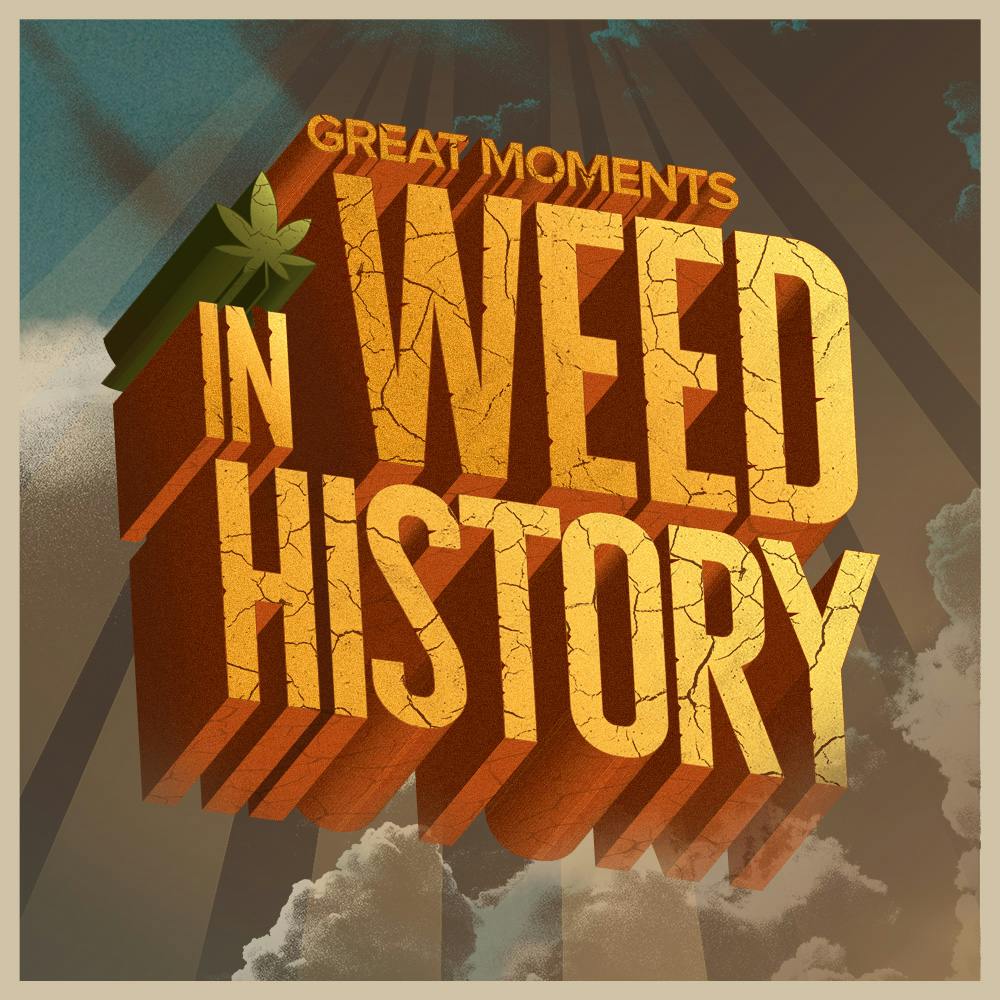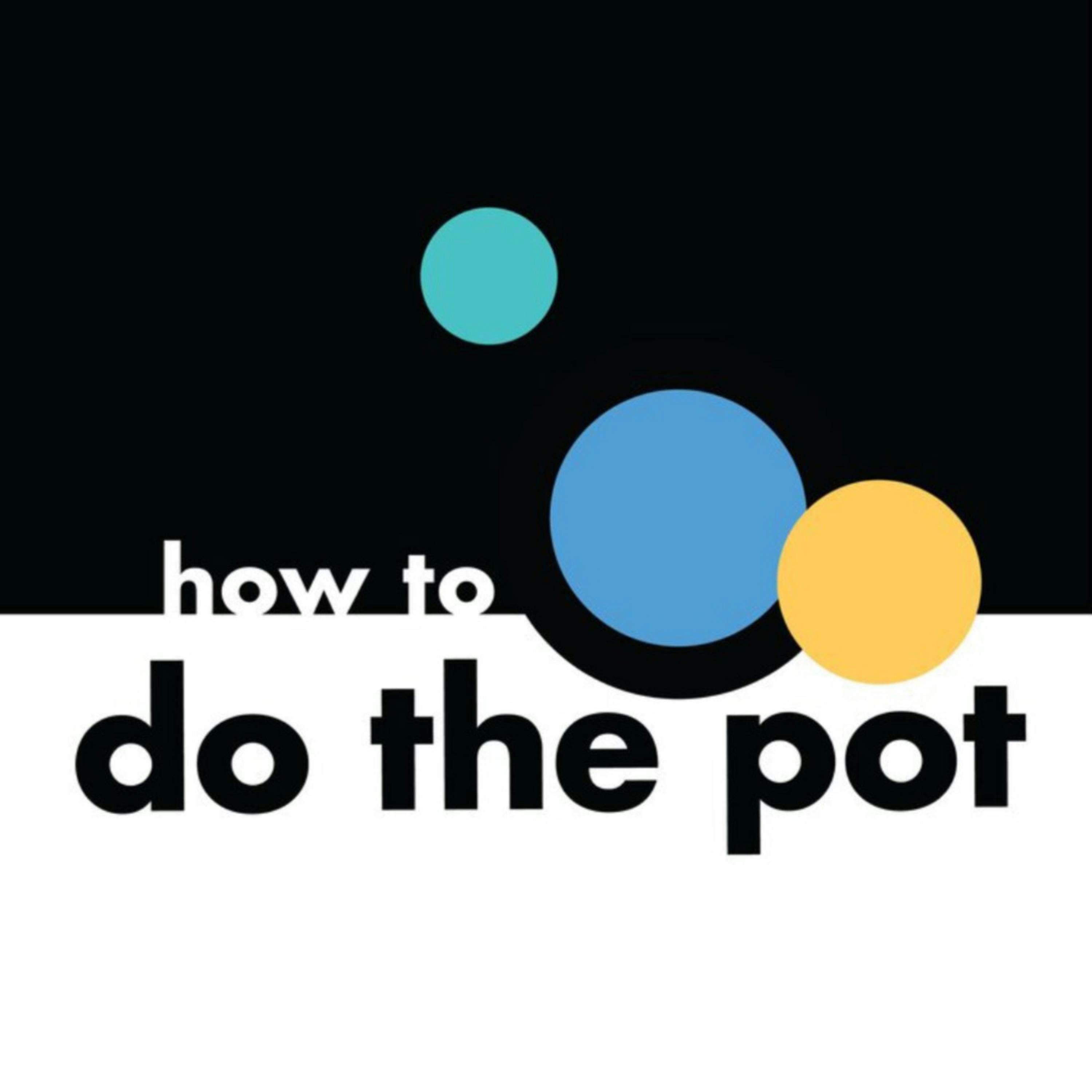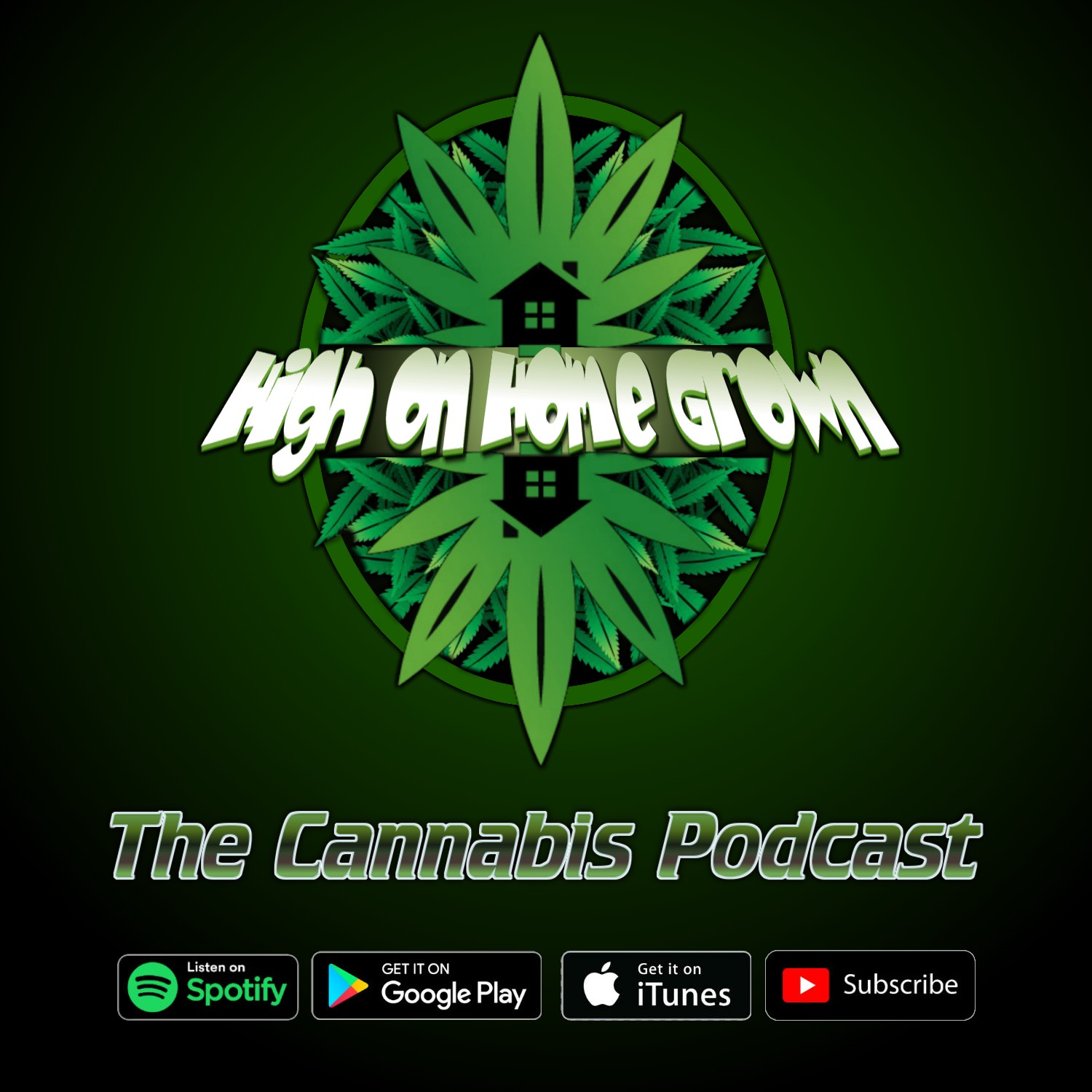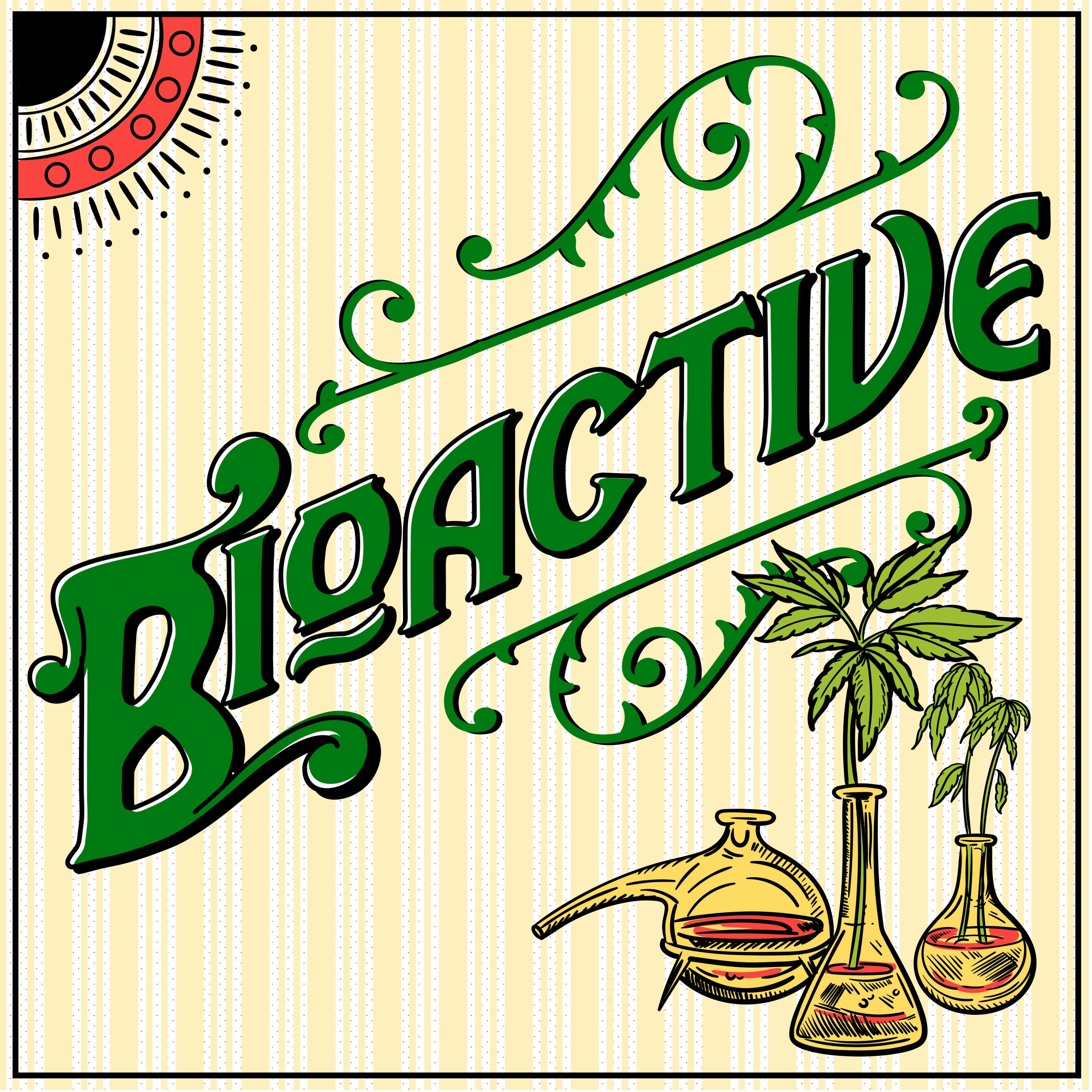
Bite Me The Show About Edibles
Helping cooks make great cannabis edibles at home.
Learn how to make cannabis edibles and take control of your high life! Bite Me is a weekly show that helps home cooks make fun, safe and effective cannabis edibles while saving money. Listen as host Margaret walks you through a marijuana infused recipe that she has tested in her home kitchen or interviews with expert guests. New episodes every Thursday.
Bite Me The Show About Edibles
In Control: The Science and Craft of Cannabis Sublinguals
What if your edible didn’t make you wait? We’re diving under the tongue to unpack how sublingual cannabis delivers fast, predictable effects—and how you can craft potent, reliable tinctures right at home. From the science of absorption to practical DIY steps, we share the exact methods, trade-offs, and safety notes you need to feel confident with alcohol and glycerin tinctures.
If you’re curious about faster onset, better predictability, and DIY cannabis that fits your life, this guide is your new playbook. Subscribe, share with a friend who’s tincture-curious, and leave a review to help others find the show. What ratio are you mixing first?
Join the waitlist at JoinBiteMe.com/challenge - Music by Alexander Blu
Visit the website for full show notes, free dosing calculator, recipes and more.
What happens when you take a love of food, a passion for culture, and a deep knowledge of cannabis, and you toss them all into one bowl, you get bite me. The podcast that explores the intersection of food, culture, and cannabis helps cooks make great edibles at home. I am your host, Margaret, a certified gangier, a TCI certified cannabis educator, and I believe your kitchen is the best dispensary you'll ever have. Together we'll explore the stories, the science, and the sheer joy of making safe, effective, and unforgettable edibles at home. So preheat your oven and get ready for a great episode. Let's dive in. Today we are going to be talking about the science of sublinguals. How do they work? And why? And we're gonna get into the nitty-gritty of the science behind that so you have a better understanding of how this particular format might work for you in your life. Now, before we get into today's episode, I just want to say, I hope the audio for this one works well, turns out okay. I am recording in Nelson, British Columbia. I'm visiting my friend, and I'm actually at the time of this recording, I'll be headed home in a couple of days. But I just wanted to get this under this recording under the belt. I had an opportunity to do some recording, and I gotta say, Nelson is a difficult place to get to. It is not easy. The closest regional airports, it's still a couple, no matter which way you go. One is a two and a half, three-hour drive. There is one that's a a 30-minute drive, but it is nicknamed, it's called Castlegar. But it's nicknamed Cancelgar because it's a small airport, and oftentimes the weather means that flights get canceled on a regular basis. So there's logistics with getting to any of those airports because there's you can't fly directly to them. You have to fly into a place like Calgary or Vancouver first. So it's been an adventure. But as my friend said when I came out to see her, she's like, you'll see why Nelson is so special and why people stay here. Because it's difficult to get to. And now I can appreciate that. I had a chance to visit a couple of pot stores here, which was really fun. And we picked up some drinks. She had plenty of weed. It's interesting because Nelson is a place where historically many, many people were growing long before the cannabis stores came along. So I'm sure there's a lot of feelings about that. But my friend happens to know someone who is growing and is regularly gifted weed from that friend and other friends, because a friend with weed is a friend indeed. Am I right? Which is why I should maybe make a little plug right here, friends. If you haven't yet joined the Bite Me Cannabis Club, you can find some like-minded cannabis lovers over there. It's a really lovely place, an online place that I've created for all you wonderful folks, so I can have a more two-way conversation with you when it comes to cannabis and all the other things that are lighting us up in our lives. So check it out. You if you can learn more at joinbiteme.com. But of course, if you're joining us for the first time, this will be a good episode for you to get into some of the science. And if you've been listening for a while, thank you for being here. It's because of you that I'm still doing this six years later. Can you believe it? Six years later. So, Nelson, as I was saying, my friend was telling me a little bit about the history of this place. She's lived here for 20 years, I believe, originally born in Ontario, moved out to Nel out to BC generally a long time ago, over 20 years ago. She did come back to Ontario during the pandemic because she wanted to be close to family while we were doing lockdowns and all that fun stuff. We don't need to talk about that time in history, but I can say that I'm grateful because if it hadn't been for the fact that she came back to Ontario, I would never have met her. And it was during her time, she spent about four years in Ontario, that I became friends with her. And here we are. So after a time, she did move back to Nelson and has settled back into life in small town British Columbia. And even though this is a town of 10,000 people, wow, I gotta say that this town has everything. Every this town has everything. It's right on a lake, there's mountains all around it, but it's got all the amenities you could hope for in a larger town, except you're going to meet a lot of people on the street that you probably know. You work with your neighbors, your school, school people, all the rest of it. I have been told that there are several rules to Nelson that people abide by. One is you never ask what people do for a living, of course, a holdover from when cannabis was very illegal. Two, you never ask to see somebody's basement when they're giving you a house tour, because oftentimes people were growing in their basements. And three, if you come across somebody that you know in an alley, you don't stop and talk because there's a whole bunch of alleys in the downtown area. From what I've been able to see, we went on a little tour of the street art and murals that exist in this town, of which there are many. They actually have like a street art festival every year, but they have like all these beautiful murals. And you get so I saw a lot of these back alleys where some of these murals were. But the idea was that because it is a small town, and if you're out on the street, you're likely to run into somebody you know and you don't always feel like talking, you take the back alleys. That's that's the rule. So cannabis culture is alive and well, and it's so interesting being in a place where so many people are cool with cannabis because uh in Ontario, at least in a lot of the circles that I know, you know, there's still a lot of stigma around cannabis, and that just doesn't seem to really exist here. And it's so interesting. So you have this small town that my friend has told me started out way back when, of course, it was a first First Nations land, eventually became a mining town. And then at a certain point, a lot of draft dodgers came up from the US, and many of those folks are the ones who started growing weed, according to this very casual history that I got while we were walking around town. And here we are today. There's still a lot of logging around, of course, because there's trees everywhere in the mountains. And uh I think there's still obviously people growing weed, but the legal weed industry has certainly changed things quite a bit. But that's a little history for you of my time spent in Nelson, British Columbia. We've done some hiking, we did some camping, we checked out some hot springs, which was amazing. Uh, some of these natural hot springs are like hotter than your hot tub. It is incredible. And this is an outdoor lover's paradise, honestly. So I'll be headed home very soon. It'll be a long, arduous journey, but it was a very worthwhile, very worthwhile to spend some time here with a dear friend. And I'm looking forward to getting back and seeing my friends and family back home. But this has been a beautiful, this has been beautiful. Thanks for sharing it with me, friends. Have you ever wished you could get the predictable controlled effects of an edible without that long, sometimes unpredictable wait? And if you've listened to the episode on onset times, you will know what I'm talking about. There are many factors that can influence how an edible takes effect. And if you haven't listened to that episode yet, The Signs of Onset Times, you may want to check that one out as well. But you know that feeling when you're eating a brownie and then you're wondering for the next hour or so when it's going to kick in? What if you could feel the effects in 15 minutes instead of an hour? Well, today we're going to talk about that exactly. We're stepping outside the kitchen to explore a fascinating and fast-acting alternative to traditional edibles, sublinguals. It's a fancy word, but the concept is simple and incredibly useful for any home cannabis cook. We'll get into what they are, the science that makes them work so fast, and of course, how you can make your own at home. Because would it really be bite me if we weren't experimenting in the kitchen? Like the mad hatters that we all are. So, what exactly is a sublingual? The name itself, sublingual, literally means under the tongue. And that's precisely where the magic happens. We're talking about the products like tinctures, which are the little dropper bottles of cannabis-infused liquids, as well as oral sprays and even thin disposable strips. And unlike an edible that you chew and swallow, you administer a sublingual by placing it under your tongue and letting it absorb directly into your body. The reason this method is so different and so much faster comes down to the unique environment inside your mouth. The area under your tongue is filled with mucous membranes that are packed with tiny blood vessels, blood vessels or capillaries sitting very close to the surface. And when you place a cannabis tincture there, the cannabinoids like the THC, the CBD, can pass right through those thin membranes and enter directly into your bloodstream. This is a total game changer because it completely bypasses what's known as the first pass effect. When you eat an edible, it has to travel all the way through the digestive system and then to your liver. Your liver metabolizes the THC, converting it into a more potent but slower acting compound. And this journey is why the edible can take so long to kick in. And it's also where a lot of the original potency can be lost. I also did an episode on this, which I think was inventively entitled The Science of Edibles, which you can check out, and I get more into that first pass metabolism, first pass effect on how edibles work in your digestive system. Now, with sublinguals, you skip that whole digestive tour. The cannabinoids get a direct express ticket into your system. This means that you'll start to feel the effects in as little as 10 to 20 minutes, which is a world away from an hour or more that you might have to wait after eating an edible. The trade-off is that the effects aren't going to last quite as long, usually around two to four hours versus the four to eight you might get from a standard edible. But for many people, that faster onset and shorter duration means more control, which is always our goal here. Now, if you walk into a dispensary, you'll see a few different kinds of sublinguals, and they're normally defined by what the cannabis is infused into. The most classic and common form is an alcohol-based tincture. These have been around for centuries as a way to make herbal medicines. They typically use a very high-proof foo-grade grain alcohol because it's an incredibly effective solvent for pulling out all those valuable cannabinoids and terpenes out of the plant. The main downside for some is the strong burning taste of alcohol. For those who want to avoid alcohol, there's also a wonderful alternative: glycerin tinctures. They use foo-grade vegetable glycerin, which is a thick, sweet plant-based liquid. It's not quite as efficient as an extraction as compared to alcohol, but it's much more palatable and perfect for anyone with an alcohol sensitivity or those avoiding alcohol completely. And of course, technology has given us modern marvels like precisely metered sublingual sprays and little dissolvable strips that look like breath strips. And they offer incredible convenience and dosing accuracy, but they are much more complex to create at home. So for our purposes, tinctures are where the DIY magic is at. And as you know, here at ByteMe, we're all about empowering you, the home cook. You absolutely do not need a high-tech lab to create your own effective and reliable cannabis tinctures. So let's walk through a simple foundational recipe. First things first, as you've heard me say a million times, decarboxylation is key. You have to activate your cannabis, and you do this by gently heating your flour in the oven. I like to go with about 240 degrees Fahrenheit for about 30 minutes. And if you need a refresher on that, you can check out the website or listen back to the episodes that I've done on decarboxylation. I'll link to those in the show notes. Once your cannabis is decarbed, you have your two main pathways for your infusion. For the alcohol method, you'll combine your decarbed cannabis with a high-proof grain alcohol in a mason jar. Make sure the alcohol completely covers the flour, and then you seal it up and store it in a cool, dark place. The traditional method is to let it sit for several weeks, giving it a good shake every day. But if you're impatient like me, you can speed up this process by creating a warm water bath and a crock pot or a double broiler and letting it infuse over a few hours on very low heat. Never use direct heat with alcohol. I hope this goes without saying. And of course, I have done some experimenting when I interviewed Vanessa Laverado on the podcast. We talked about shortening infusion times. This also applies to alcohol. You don't necessarily have to keep it in the cool dark place forever. You will still extract cannabinoids if you do it for 30 minutes, giving it a shake every 10 minutes or so. Or I found my own experiments. I would have to go back and look to see what she found with her experimentation. But I did get more, a significant more amount. I shouldn't say significant. I have to like back up my notes, and they're not handy at the moment, but I did get more cannabinoids pulled out of the plant material when I let it sit for 24 hours. So you don't necessarily have to leave it sitting for weeks to get that, to get some of the cannabinoids pulled out for the alcohol method. So keep that in mind. You don't necessarily need to heat it up, though that can help. For the glycerin method, the process is similar, but it really does, it really does require heat. You'll combine your decarped flour and a food-grade glycerin in a jar and then place that jar in a pot with water or in a double broiler, and you can infuse it on low, gentle heat for a few hours, stirring or shaking occasionally. You want to give the glycerin plenty of time to absorb all those cannabinoids. And after your infusion is complete, you'll let it cool and then straighten out all that plant material. I recommend using like a fine mesh sieve, and then if you have a little cheesecloth as well for a second strain, that can help get it really clean. And that's it. You've made your tincture. All that's left is to pour into a dark uh glass dropper bottle for easy dosing and storage. Make sure you label it clearly with the date, the ingredients, and a big warning that it's a cannabis product, of course. You know me, label, label, label. And one quick note on potency. It can be tricky to get the exact strength of your homemade tinctures without lab equipment. And that's the next uh and that is why our next topic, dosing, is so credible, critical. And that's why our next topic, dosing, is so critical. The golden rule of edibles applies just as much to tinctures. Start low and go slow. And I can't stress this enough. I know if you've been listening to this show for any length of time, you know I mention this all the time. We're talking about one or two single drops to start, not a full dropper. And this technique is just as important as the dose. You want to place the drops under your tongue and hold them there for at least 30 to 60 seconds before you swallow. And this gives those mucous membranes time to absorb the cannabinoids. If you swallow it immediately, you're just turning it into a slow-acting edible. So the thing here, this is when you notice that the alcohol tincture can be quite leave a burning sensation under your tongue, but that's just the cost of doing business. So you're going to wait at least, the longer you can hold it under your tongue, the better. Wait at least 30 minutes to see how you feel before considering taking more. In fact, I'd probably give it even longer than that. And you'll quickly learn what the right dose is for you, giving you a level of control that's hard to achieve with other methods. And of course, you can calculate, even though it is a little more difficult and maybe not quite as accurate as lab testing, you can calculate the potency of your tinctures using basic math. And I did a whole episode on that as well. And if you check that out, I have a handy dosing potency document that you can access to figure it out. I have a dosing calculator on my website as well. But sometimes it's really smart to know how to do the math that's behind some of these calculators that you'll see online. It's pretty easy to do once you know how to do it. It's some pretty basic math, but I do recommend that you figure out the potency of your tinctures, of course, because then otherwise, how do you know how much it is that you're taking? Starting low and going slow doesn't mean a whole lot. Like, what's two drops if you have no idea how potent it is? Am I right? Right. So I'll link to that in the show notes as well so you can check that out for when you go to make your own tinctures. And there you have it. Subblinguals are a fantastic tool for any cannabis user's toolkit, offering a fast-acting, discrete, and highly controllable experience. Whether you choose an alcohol or glycerin base, making your own tinctures is simple and rewarding, and that puts all the powers right in your hands where we want it. So thank you for tuning in to bite me. I hope you feel empowered to explore the science of sublinguals. Now that I've done this episode, I don't think I have any sublinguals or tinctures in my pantry at the moment. And that is, oh, ooh, I do have one in the freezer that I've kind of forgotten about, which I probably need to deal with when I get back from Nelson, British Columbia. But I haven't actually experimented with glycerin at all yet. I know some people that have. That has come up actually several times in the Bite Me Cannabis Club, people talking about their glycerin tinctures and how they're using them because tinctures can also be great to use in certain types of edibles as well. And of course, you can go on to make things like uh Rick Simpson oil or FECO as well. So it sort of opens up a whole new world of possibilities. But I think I'm going to be making some new tinctures when I go home. Especially for me, the CBD, something I can do. Actually, I see the value of having both. I like having CBD and THC tinkers. And then you can always mix them as well. Like if you have two separate ones, I mean you can always use a ratioed cannabis as well, but if you have two separate tinctures, you can always mix them too. A little, a little choose your own adventure, if you will. So I'm inspired now to create some new tinctures because I haven't done it in a little bit. And it is a great way to get your medicine easily and discreetly without having to roll joints or go outside. I know many of you, myself, well, actually, I don't really smoke joints very much, but I know many of you love the ritual of joints. Tinctures can really answer the call. So thanks for tuning in, my friends. If you enjoyed this episode, please share it with somebody that you also think would enjoy it because sharing is caring and really helps spread the word of this show. And word of mouth is probably the best way to tell the world about Bite Me, the show about edibles. And that's it for this week, my friends. I'm your host, Margaret. And until next time, stay hi.
Podcasts we love
Check out these other fine podcasts recommended by us, not an algorithm.

The Cannabis Potcast
Gary Johnston
High Ladies
High Ladies Podcast
The Smoking Spot
The Smoking Spot
Great Moments in Weed History
David Bienenstock
Dope History
Tad Hussey, Chad Westport
The Wake + Bake Podcast
Corinne Tobias and Andrea Meharg
How to Do the Pot
Ellen Scanlon
The Weed Witch
Pipe Dreams by The Weed Witch
High on Home Grown, The Cannabis Podcast
Percys Grow Room
Exploring Cannabis & Exercise
Whitney
BIOACTIVE
Riley D. Kirk, Ph.D.
